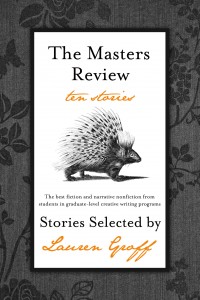 When I first received the position of content coordinator for Superstition Review for the fall 2013 semester, I only knew the basics of the position: that I’d be logging content submissions and that I was chosen for it because I have good attention to detail. Only when the semester began did I come to understand the full scope of the position and the various skills I would need to acquire. Along with logging the incoming submissions into spreadsheets, I would likewise be required to send proofs to contributors and build the web pages for each new issue. A considerable number of hours in those first few weeks as a full-fledged intern were spent learning the ins-and-outs of programs like Google Spreadsheets, Submittable, and Drupal. However, the biggest scare for me was that a content coordinator must possess a working knowledge of basic HTML—a skill I knew absolutely nothing about.
When I first received the position of content coordinator for Superstition Review for the fall 2013 semester, I only knew the basics of the position: that I’d be logging content submissions and that I was chosen for it because I have good attention to detail. Only when the semester began did I come to understand the full scope of the position and the various skills I would need to acquire. Along with logging the incoming submissions into spreadsheets, I would likewise be required to send proofs to contributors and build the web pages for each new issue. A considerable number of hours in those first few weeks as a full-fledged intern were spent learning the ins-and-outs of programs like Google Spreadsheets, Submittable, and Drupal. However, the biggest scare for me was that a content coordinator must possess a working knowledge of basic HTML—a skill I knew absolutely nothing about.
Fortunately, a friend came to my rescue with a two-inch thick book providing descriptive, step-by-step guides on how to write and read HTML coding. He bookmarked which chapters I would need to study and, after a few weeks of work, I found myself growing in comfort with the idea of coding. Despite the initial scare it provided, it turned out to be one of my favorite parts of the position. While scanning lines of code looking for errors and the causes of weird spacing or character issues is certainly long and grueling work, there was something satisfying about knowing I contributed to making the magazine look professional and clean.
As a whole, the role of a content coordinator does involve much detail work. Logging submissions requires a close eye with tracking changes in the editors’ votes on submissions, catching duplicated submissions, and watching for withdrawn ones. Building the content pages by far requires the most detail work, especially with longer submissions of fiction and nonfiction—my particular responsibilities include fiction, art, and interviews. Imagine reading a block of text consisting of a single long paragraph with no page breaks or indents in search of a particular set of words or characters—this roughly describes the process.
I also want to stress the responsibility and amount of trust between the content coordinators, the editors, and our founder that comes with the position. As content coordinators, we are trusted to log submissions on a consistent basis in order to keep up with the votes and decisions of the editing interns. Likewise, we are trusted with the responsibility of making sure the submitted content is spaced and formatted properly and that the building of the issue itself is completed before the launch date.
The year I’ve spent interning for Superstition Review has been a experience I will never forget. It has provided me with the opportunity to hone skills I possessed prior to the internship and obtain a substantial list of new ones, including a working knowledge of basic HTML. Furthermore, the skills I obtained through interning with Superstition Review will assist in future career endeavors, as I hope to find work at a publishing company or literary magazine after completing my degree. Tedious as some of the work might feel—especially after spending a few hours double checking editor votes or correcting code—it is very rewarding work and I’m delighted to have been chosen for the position.





